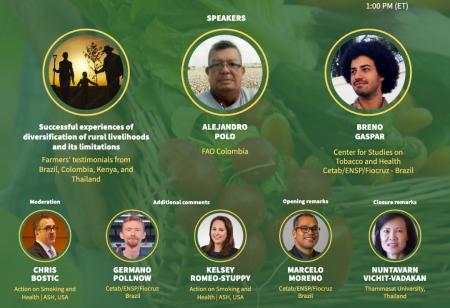
Durban Call to Action on the Elimination of Child Labor - Action point 2: End child labor in agriculture - 10 June 2022

During the 5th Global Conference on the Elimination of Child Labor, which took place in Durban, South Africa from 15 to 20 May 2022, speakers at a high-level panel on agriculture addressed the roots of child labor in this sector and how serious the situation is.
A total of 70 percent of all child labor is found in the agricultural sector, with and estimated 112 million children working – it is the only sector in recent years that has seen an increase in child labor.
Speakers agreed that agriculture needs cross-sectoral solutions, which include quality education, social protection, women’s empowerment, and collaboration between ministries.
Delegates adopted the Durban Call to Action on the Elimination of Child Labor, published on June 8th. The document has a specific section related to ending child labor in agriculture. To achieve that goal, there are eight immediate and effective measures to take:
- increasing investment in the economic and social development of rural areas as a strategy for reducing poverty, recognizing that the elimination of child labor is an essential prerequisite for decent work in the sector and can contribute to sustainable food systems;
- facilitating increased access to finance and credit, including for smallholder farmers, particularly in Africa, to promote investment and innovation;
- creating mechanisms to improve the labor conditions of smallholder and family farms in order to end their functional dependence on child labor, as well as of families who earn their livelihood in fishing, forestry and livestock herding, and to secure adequate incomes for small producers and owner-operators, through, for example, increasing productivity and supporting diversification; supporting, in line with relevant ILO instruments including the Promotion of Cooperatives Recommendation, 2002 (No. 193), the establishment and functioning of cooperatives, as well as representative organizations of small producers; reassessing piece-rate wage systems in agriculture and recognizing the need to guarantee adequate minimum wages for agricultural workers, sufficient to meet their families’ needs;
- adopting an action plan to eliminate obstacles to the establishment, growth and the pursuit of their lawful activities of organizations of rural workers, to give agricultural workers a role in economic and social development, in line with ILO Rural Workers’ Organizations Convention, 1975 (No. 141), in law and in practice;
- ensuring the participation of agriculture-related ministries and other agricultural stakeholders, including employers’ organizations and workers’ organizations, in national policy and legislative frameworks and action plans, and cooperation between agricultural extension services and labor inspection and other relevant authorities;
- enabling and encouraging, through regulatory measures and other approaches, agricultural stakeholders and communities to adopt safe agricultural practices and to eliminate or minimize work-related hazards and risks, including exposure to harmful substances, such as hazardous pesticides, promoting increased availability of more efficient and safer machinery, equipment and tools, and employing the use of sustainable technologies in order to improve occupational safety and health and eliminate the need for child labor;
- strengthening agricultural labor markets and creating decent work opportunities for youth, women and men and supporting innovative vocational education and training in agri-food production and processing services;
- improving data collection and collaborating with relevant United Nations Agencies such UNICEF and the FAO, to jointly progress towards the elimination of child labor in agriculture, including in fisheries and aquaculture and supporting the 2020 FAO Framework on Ending Child Labor in Agriculture and the International Partnership for Cooperation on Child Labor in Agriculture.
Because of the risks it poses to the health of workers, tobacco growing is considered of the worst forms of child labor. Still, child labor in tobacco crops is very common in all the major tobacco-producing countries. It is vital that these countries commit to take the above-mentioned measures.
The Durban Call to Action commits Member States to tracking their own progress from 2022 to 2025 and present the results at the 6th Global Conference on the Elimination of Child Labor. They also agree to share information on good practices based on lessons learned and evidence from national and regional initiatives.
Besides agriculture, the document includes commitments in other areas. You can read the full Call to Action here.





